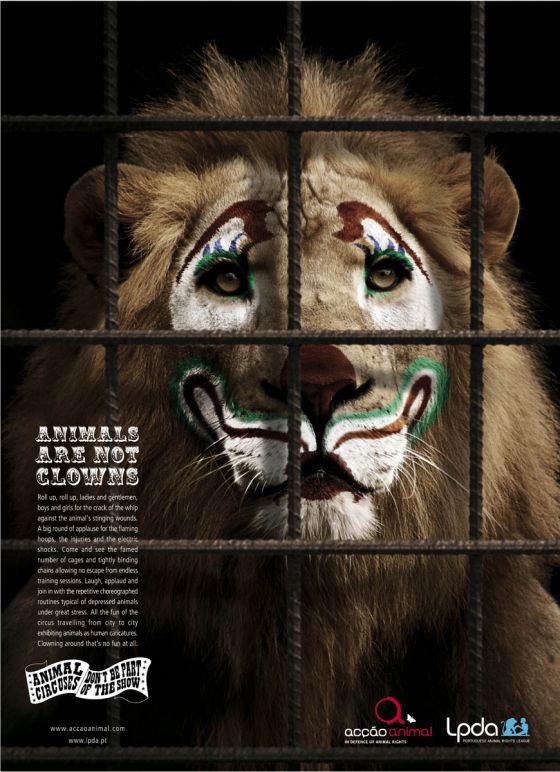In the grand tapestry of human entertainment, the suffering of animals has been woven into the fabric of circuses, zoos, and laboratories. Like a haunting melody that lingers long after the performance has ended, the plight of these creatures requires our rapt attention. The cages in which they reside are often more than mere enclosures; they are symbols of a societal indifference that must be challenged. To address the pervasive issue of animal cruelty in such establishments, a multifaceted approach is essential—one that combines awareness, advocacy, direct action, and systemic change.
Awareness: Illuminating the Darkness
First and foremost, raising awareness is crucial. It is the initial spark that ignites the fire of change. The narrative surrounding animal cruelty in circuses, zoos, and labs has often been shrouded in media portrayals of glamour and excitement. Yet, behind the curtain lies a different reality—one filled with despair, fear, and exploitation.
Statistics reveal the grim truth: animals in confinement exhibit signs of severe psychological distress. They are often deprived of their natural instincts, leading to behaviors akin to madness. Elephants sway back and forth in a heart-wrenching display of anxiety, while tigers pacing in their enclosures reflect a life devoid of freedom. Informing the public about these conditions is akin to shining a lantern in the dark corners of a room; it illuminates the shadows where exploitation festers.
Social media platforms can be utilized as powerful tools for spreading awareness. Compelling visuals, informative graphics, and poignant stories shared across these channels can reach a broad audience. From viral campaigns to online petitions, digital activism fosters a community of informed individuals ready to advocate for change.
Advocacy: The Collective Voice
Once awareness is established, advocacy becomes the next course of action. Individual voices coalesce into a symphony of dissent against cruelty. Engaging with local, national, and international animal rights organizations amplifies the message and strengthens the movement. These organizations often have the resources and expertise needed to lobby for legal reforms and corporate responsibility.
Participating in peaceful protests and demonstrations can also make a significant impact. Such collective actions act as a clarion call—making it abundantly clear that society will no longer condone the maltreatment of animals for entertainment or experimentation. Each placard raised in defiance serves as a testament to the unwavering commitment to justice.
Your voice matters. Writing letters to government representatives, signing petitions, and utilizing platforms to communicate with decision-makers can alter the trajectory of policies related to animal welfare. By demanding stricter regulations on circuses and zoos, as well as advocating for a ban on the use of animals in invasive research, you embody the change that is essential.
Direct Action: Making Personal Choices
Advocacy efforts complement our personal choices, creating a powerful ripple effect. Choosing to eschew entertainment that exploits animals is both a moral stand and a practical course of action. Opting to attend animal sanctuaries, where rehabilitation and rehabilitation replace cruelty, supports a more ethical approach to education and entertainment. These places demonstrate that animals can live fulfilled lives free from the shackles of confinement.
Moreover, supporting circuses and zoos that do not utilize animals in their performances helps foster a new model of entertainment—one based on respect, education, and empathy. There are countless innovative circuses that utilize human artistry and creativity, mesmerizing audiences without the inclusion of animal suffering. Attending these events sends a message to the industry: that compassion over cruelty is the preferred path forward.
Additionally, consider advocating for and donating to sanctuaries and nonprofit organizations dedicated to rescuing and rehabilitating animals from abusive environments. These establishments provide a second chance for animals, allowing them to recover in a safe and nurturing environment.
Systemic Change: Paving the Path to Progress
Ultimately, combating animal cruelty requires systemic change. This is a call to action for lawmakers, corporations, and communities to enact policies that prioritize animal welfare. Legislation that prohibits the use of wild animals in circuses, enforces strict ethical guidelines in laboratories, and enhances the standards of animal care in zoos is paramount.
Lobbying efforts should focus on creating comprehensive legal protections that recognize animals as sentient beings deserving of humane treatment. Engaging with policymakers—educating them on the impacts of animal exploitation—can lead to significant legislative change. By making a compelling case for animal rights, change can be hypothesized, formulated, and, ultimately, executed.
Community Engagement: A Unified Front
Creating localized groups dedicated to animal rights can also foster a culture of awareness and action within communities. Hosting educational workshops, film screenings, and discussions can engage individuals on what they can do to combat animal cruelty. The strength of community, when united under a common cause, is undeniable. Each individual becomes a thread in a broader movement, contributing to a rich tapestry of change.
Conclusion: A Collective Responsibility
Addressing animal cruelty in circuses, zoos, and laboratories is a collective responsibility that necessitates an unwavering commitment. The call to action is not merely a whisper; it is a roar—a resonant reminder that empathy and respect for all sentient beings must guide our choices and actions. By raising awareness, advocating for change, making intentional choices, and pursuing systemic reform, we can dismantle the chains of cruelty that bind countless animals.
In this shared endeavor, let us emerge from the shadows and step into the light, hand in hand, united in our mission to cultivate a world where animals are revered, not exploited.









